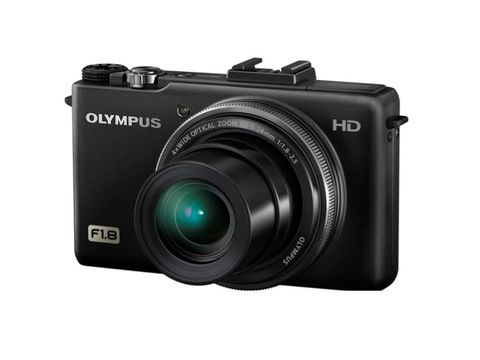Why you can trust TechRadar
With 10 million photosites on a 1/6.3-inch sensor the Olympus XZ-1 isn't going to be able to match the image quality of a DSLR, but in good light when low sensitivity settings are used it can match the output from its main competitors. In fact, in some conditions its raw files have more detail than those from either the Canon G12 or the Nikon P7000.
To achieve this the files need to be processed using the supplied Olympus Viewer 2 software, as this is the only way that the Noise Filter can be turned off. Even then, the lack of chroma noise in the final image makes it clear that there's a fair bit of noise removal activity still going on.
When viewed at 100% on the computer screen, high sensitivity images have quite strong edges around softer even-toned areas. If the noise filter is left in its default Standard setting, images taken at higher sensitivity values look almost like water colours at Actual Pixels (100%) on screen, with well defined edges surrounding soft, smudgy patches. The effect is even noticeable at ISO 400, though it is much less so.
While pixel peeping is interesting, it's the results at more sensible viewing and printing sizes that are important. At the lower sensitivity settings the Olympus XZ-1 is capable of producing images that make very pleasant A3 prints. This is even true in some cases with the very highest sensitivity setting, ISO 6400, but I wouldn't take this for granted and would only use it where strictly necessary. It is safer to keep prints to A4 size or smaller if the images are shot at ISO 6400 or 3200.
Images of strongly linear subjects reveal that the XZ-1's iZuiko lens isn't able to correct distortion completely. It's most noticeable at the wide-angle end where barrel distortion is visible, especially in close-up images. Pin cushion distortion is also apparent at the telephoto end of the lens, but it's less noticeable than the distortion at the wide-angle end. Although Olympus Viewer 2 has a distortion correction control it isn't able to correct the most extreme bending visible in macro images.
On a more positive note, chromatic aberration is not an issue and I only found a few very limited examples of it in my images from the Olympus XZ-1. The majority of the brightly backlit edges in my images show no sign of chromatic aberration.
Olympus has a good reputation for colour reproduction and the XZ-1 doesn't call this into question. The auto white balance system also performs well in a variety of lighting conditions, often capturing the atmosphere of mixed lighting without overly correcting or totally eradicating any colourcast. Even when shooting under a heavily overcast sky, however, the Cloudy white balance produces images that are too warm to be natural.
In the default Natural Picture Mode the Olympus XZ-1 produces punchy, vibrant images, which push the 'natural' description a little, but are nevertheless likely to find favour with most users. As usual, on many occasions the results from the Monochrome Picture mode look better when the contrast is pushed to its highest value.
The overwhelming majority of the images shot during this test were taken with the XZ-1's metering set to its general-purpose 324-zone multi-pattern mode. Although I had to adjust the exposure using the compensation facility occasionally, it was no more often than I would expect, and in some instances is was unnecessary when I expected it to be required. In fact, even when shooting with a bright overcast sky in part of the frame, the XZ-1 managed to correctly expose the main subject in the foreground with no intervention from me.
Thanks in part to the development of compact system cameras, contrast detection AF systems have improved a fair bit over the last couple of years. The XZ-1's AF system is on a par with its competition and is probably assisted by the brighter than average lens, which allows more light to reach the sensor. It struggles when light levels drop or subject contrast goes down, but it is respectably quick in more average lighting conditions.
I found the AF Tracking system has a mixed performance. On some occasions it managed to latch onto and follow a fairly low contrast subject as it moved around the images frame, while on others it failed to follow a more distinctive subject. When it works it's very good.
I had less success with the XZ-1's manual focus system. Although the camera displays an enlarged section of the scene, there's no focus scale to give any indication of where the focus point is. Also, the level of detail visible isn't high enough to allow you to set the focus with a great degree of confidence.
Current page: Olympus XZ-1: Performance
Prev Page Olympus XZ-1: Build and handling Next Page Olympus XZ-1: Image quality
